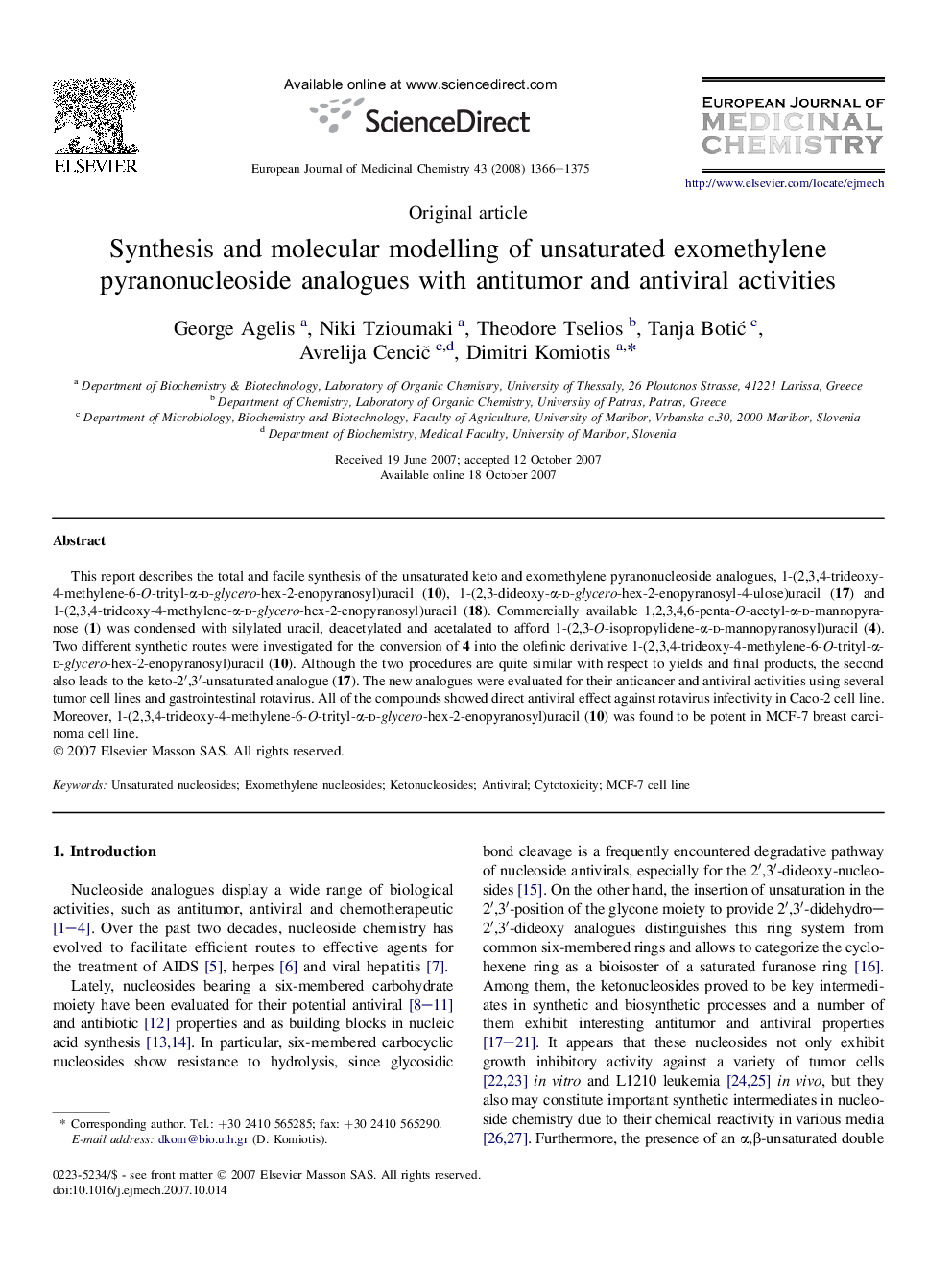| Article ID | Journal | Published Year | Pages | File Type |
|---|---|---|---|---|
| 1393425 | European Journal of Medicinal Chemistry | 2008 | 10 Pages |
This report describes the total and facile synthesis of the unsaturated keto and exomethylene pyranonucleoside analogues, 1-(2,3,4-trideoxy-4-methylene-6-O-trityl-α-d-glycero-hex-2-enopyranosyl)uracil (10), 1-(2,3-dideoxy-α-d-glycero-hex-2-enopyranosyl-4-ulose)uracil (17) and 1-(2,3,4-trideoxy-4-methylene-α-d-glycero-hex-2-enopyranosyl)uracil (18). Commercially available 1,2,3,4,6-penta-O-acetyl-α-d-mannopyranose (1) was condensed with silylated uracil, deacetylated and acetalated to afford 1-(2,3-O-isopropylidene-α-d-mannopyranosyl)uracil (4). Two different synthetic routes were investigated for the conversion of 4 into the olefinic derivative 1-(2,3,4-trideoxy-4-methylene-6-O-trityl-α-d-glycero-hex-2-enopyranosyl)uracil (10). Although the two procedures are quite similar with respect to yields and final products, the second also leads to the keto-2′,3′-unsaturated analogue (17). The new analogues were evaluated for their anticancer and antiviral activities using several tumor cell lines and gastrointestinal rotavirus. All of the compounds showed direct antiviral effect against rotavirus infectivity in Caco-2 cell line. Moreover, 1-(2,3,4-trideoxy-4-methylene-6-O-trityl-α-d-glycero-hex-2-enopyranosyl)uracil (10) was found to be potent in MCF-7 breast carcinoma cell line.
Graphical abstractWe report the synthesis of a novel series of exomethylene and unsaturated exomethylene pyranonucleosides. All new molecules inhibited the growth of Caco-2 cells and showed direct antiviral effect as they were able to inhibit rotavirus action. Especially, derivative 10 has been highly selective and sufficiently cytotoxic on carcinoma cell lines.Figure optionsDownload full-size imageDownload as PowerPoint slide
